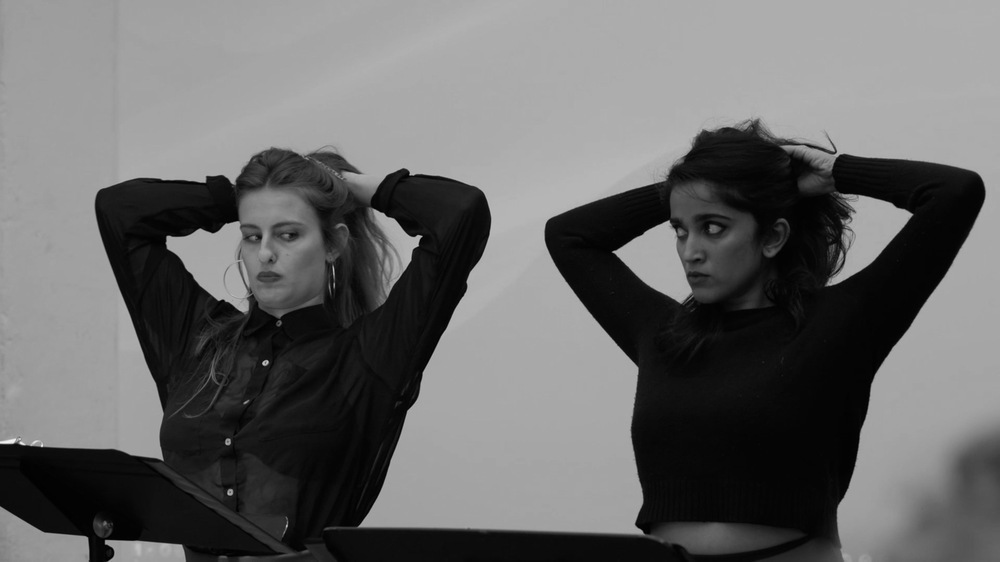
CATNESS
first performed on January 30, 2020
NEW INC @ The New Museum of Art
performed once in 2020
KAT MUSTATEA
Arya Kashyap / Isabel Monk Cade / Megan Tomei
New York, NY
www.mustatea.com/
CATNESS
KAT MUSTATEA
Two girls, dressed identically, get into an argument. It turns out they are both named Amanda Palmer, and, even eerier, all such Amanda Palmers—and, yes, there are others—share the same secret aptitude for turning into cats at night.
As each Amanda Palmer is becoming cat-like, her very language transforms into something wild, hybrid, and impossible, too. The effect is created by using only words that do not contain the letter ‘E.’ The audience still understands what the Amandas are saying—their speech makes grammatical sense—but the resulting language sounds heightened, operatic, stylized and utterly weird.
“Catness” explores the use of synthetic language in the context of live performance. In 1969, Georges Perec, a member of the literary group Oulipo, wrote a 300-page novel entirely without using the letter ‘E.’ Modern artificial intelligence techniques are so advanced, a similar composition can now be done quickly with the aid of a computer. Many other constraints are possible: you can write text in which all the words have less than four letters, or that use a certain kind of alliteration, or that are palindromes. I call this type of writing synthetic language.
The absurdity of the story—young women who all dress the same, who all care about the same obscure designer, who all share the same mannerisms, obsessions, and aspirations, who even share the same name—this kind of absurdity gets at a uniquely modern condition. In the digital age, we have seen a flattening of identity as people interact online. We have seen a performative cult of online influencers overtake what we once understood as moral standing and a sense of authenticity in our interactions. Mass adoption of plastic surgery, invasive beauty techniques, and Instagram face filters, all smooth out idiosyncrasies, making all faces blend together uniformly.
Underneath the polished veneer, however, we are all just animals.
“Catness” aims to portray something infrequently examined in theater: the raw sexual power of young women. The metamorphosis into cats is ultimately a metaphor for sexual awakening. The use of synthetic language, in this piece, is a means for tapping into the animal instincts that put us in touch with deeper truths, with empathetic connection to one another, with our animal tendencies for both savagery and tenderness. Intriguingly, this effect of wildness is achieved through technical constraint in its language.